Literature from the Netherlands and Flanders in Switzerland after 1945
The development of Dutch literature in Switzerland after 1945 parallels that in Austria, there is no question of a new start.
After the Second World War, attention was primarily focused on well-known authors such as Felix Timmermans, Stijn Streuvels and Ernest Claes. Beyond that, leisure literature and adventure novels drew attention. Under these circumstances, authors such as Jan de Hartog, Annie De Moor-Rignalda, Marc Elsing and Jo van Ammers-Küller enjoyed a certain success in Switzerland. During this time, it was in particular book clubs (e.g. "Europäischer Buchklub", "Büchergilde Gutenberg", "Buchklub Ex Libris") that provided Swiss readers with translations of Dutch-language literature.
Since 1945, a lot of attention was also paid to children's and youth literature in Switzerland. Works by Margriet Heymans, Koen Fossy, Lidia Postma, Tonke Dragt, among others, were translated, but it was Paul Biegel, Godfried Bomans, Anny Matti and Max Velthuijs who were the most successful. However, this does not mean that Swiss publishers did not set their own accents.
Between eyes and breath
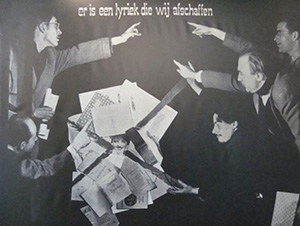
The 'Vijftigers'
In 1964, the anthology Zwischen Augen und Atem - Niederländische Lyrik seit 1945 [Between Eyes and Breath - Dutch Poetry since 1945] appeared in St. Gallen. With this publication the Austrian Heinrich Schneeweiss became one of the first translators in the German language area to present the poetry of the Vijftigers (Hans Andreus, Remco Campert, Jan Elburg, Gerrit Kouwenaar, Lucebert and others). (#Avantgarde)
At the time, the Dutch poetry of these young authors was virtually unknown abroad. Sybren Polet, one of the most important authors of experimental literature in the Dutch language area, explicitly bemoans this in the epilogue to the publication:
"in the twentieth century, modern poetry was somewhat behind in its development, with the exception of a few solitary figures. this deficit, however, was quickly made up for from 1945 onwards. [...] after the influences of the most important foreign currents had been processed, an entirely independet poetry emerged in the netherlands. it does not lag behind poetry in the larger linguistic areas."
Whether the Swiss paid attention to this statement is not known. Anyhow: translations of Adriaan Morriën as well as Hans Andreus and Remco Campert appeared in Switzerland early on. In both cases, however, not poetry was translated but (satirical) prose in the case of Morrien and literature for children in the case of Andreus.
Johan Huizinga
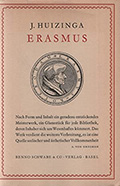

In Switzerland, many a 'filet piece' from the Dutch language area was published. In 1949, poems by Herwig Hensen were published by Speer in Zürich; in 1947, the only translation of Lode Zielens in the German language area ('Mutter, warum leben wir' (published by the Büchergilde Gutenberg) and in 1993 the first translation of Nescio in the German language, to name but three examples.
A 'crown jewel' among the translated authors was certainly Johan Huizinga. Huizinga had his debut in Germany in 1924 with Herbst des Mittelalters: Studien über Lebens- und Geistesformen des 14. und 15. Jahrhunderts in Frankreich und in den Niederlanden [Autumn of the Middle Ages: Studies on the Lifestyles and Spiritual Forms of the 14th and 15th Century in France and the Netherlands]. Four years later, Basel published Erasmus . With this book (5 editions between 1928 and 1988), the foundation was laid for Switzerland to become Huizinga's new home base in the German-speaking world. From 1935 until well after the Second World War, Huizinga's works in German translation were almost exclusively published by Swiss or by exiled publishers such as Pantheon in Amsterdam.
Between 1928 and 1988, twentyone titles by Huizinga appeared in Switzerland. Huizinga's most successful work was that in which he diagnosed the madness of his time: Im Schatten von Morgen [In the Shadow of Tomorrow]. The first German edition of Im Schatten von Morgen appeared immediately after the publication of the Dutch original in 1935. The translator was the Basel professor of history Werner Kaegi, who also translated Erasmus.
1965-1985
In the 1960s, Swiss publishers were clearly in search. They were still trying to build on the success of Dutch and Flemish regional authors in the German-speaking world from before the Second World War. The publishing house Stocker-Schmid in Zürich, for instance, published new works by Timmermans (Bauernpsalm [Peasant Psalm] (1965); Das Jesuskind in Flandern [The Christ-Child in Flanders] (1966)) in the second half of the 1960s. The family novels of Annie de Moor-Ringnalda and new translations of storytellers such as Johan Fabricius, Jan de Hartog and Johan Elsing were also published in Switzerland with some success.
At the same time, Swiss publishers tried to break new ground. Classics such as Multatuli were presented. In 1965, Manesse in Zürich published Multatuli's Max Havelaar (with a preface by W. Enzinck, whose poems had already been published in German translation by Werner Classen in Zürich in the mid-fifties).
Further noteworthy publications are Die gefahrvolle Reise des Kapitän Bontekoe und andere Logbücher und Schiffsjournale holländischer Seefahrer des 17. Jahrhunderts from 1972, in which the publishing house Erdmann (Tübingen, Basel), that specialised in historical travel stories, published the adventures of Captain Bontekoe in German translation, and the anthology Die Arbeit des Dichters [The Work of Poets] by Willem Roggeman published by Nachtmachine in Basel in 1982.
At the same time, the younger generation was also introduced—albeit with moderate success. At the end of the 1960s, Desh discovered Jan Wolkers for the German public. His Eine Rose von Fleich [A Rose of Flesh] (1969) was well received. In 1984, Nagel & Kimche introduced Jeroen Brouwers in Switzerland with Versunkenes rot [Sunken Red].

At the end of the 1960s, Swiss readers got to know the work of Godfried Bomans and Simon Carmiggelt, and more and more children's and youth literature from the Dutch-speaking world. it was then, that the foundation was laid for the success of Dutch-language children's and youth literature in Switzerland. In the 1970s, the first translations of Miep Diekmann (... und viele Grüße von Wancho [...and Greetings from Wancho] (1967); Lies: Mein Lama [Lies: My Lama] (1967)) appear in Switzerland, and the publishing house Beltz (Weinheim/Basel) discovered the work of Tonke Dragt for the German-speaking world. Her adventure novel Der Brief für den König [The Letter for the King] was reprinted four times between 1977 and 1984.(#Childrens Literature)
"The Letter for the King is a marvellously narrated, exciting adventure novel that takes you into a world of powerful kings, noble knights and brave squires and lets you experience it up close. Together with the sympathetic hero, one roots for, fears and hopes that in the battle of good and evil, the knightly virtues will prevail." (Kohlbrei, 2021)
Also discovered in Switzerland for the German-speaking readers was the work of Margriet Heymans and the stories about the dwarf Schnüffelen by Anny, Matti and Wim Spekking.
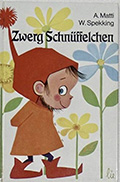

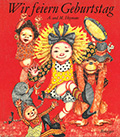
1985-2021
Dutch literature in German translation had its greatest success in Switzerland between 1985 and 2021. The basis for this success had been laid earlier. Already in the first decades after World War II, children's and youth literature from the Netherlands and Flanders were discovered in and for Switzerland. Continuing this development more and more Dutch-language children's and youth literature was translated into German and published in Switzerland after 1985.
Beltz, Nagel & Kimche, Nord-Süd and Sauerländer, publishers which plan an important role not only in Germany but also in Switzerland, have become the largest publishers of Dutch-language children's and youth literature in the German-speaking world. Their publications make up ca. 41% of the Dutch literature in German translation that is published in Switzerland.
Hans de Beer, Tonke Dragt, Ingrid and Dieter Schubert, Simone van der Vlugt and Max Velthuijs are the frontrunners of Dutch-language children's and youth literature in Switzerland.
Maarten 't Hart

The most important publishers of Dutch-language literature for adults translated into German in Switzerland are Arche (Zürich), Diogenes (Zürich) and Piper (since 2008 Piper (München) owns the publishing house Pendo, which Ernst Richard Piper had already taken over in 1998, and therefore also has a seat in Zürich).
Arche has a very distinguished selection of Dutch-language titles. Arche is the publisher of Remco Campert, the publisher of the only collection of stories by F.B. Hotz, of Einsames Abenteuer [Lonely Adventure] (1988) and Auf Leben und Tod [To Play or Die] (1990) by Anna Blaman (the latter translation was also published by Luchterhand in 1993) and one of the most important publishers of the work of Maarten 't Hart.
Maarten 't Hart made his debut in the German language area with a small publisher in Oldenburg, with the title Unfreiwillige Seereise [Involuntary Sea Voyage] (1985) a translation by students of Oldenburg University. It was followed in 1988 by Ein Schwarm Regenbrachvögel [Flight of Curlews] (Suhrkamp). After that became quiets around Maarten 't Hart in the German language area for many years.
It was not until the end of the last century that another German translation of a work by 't Hart appeared. Das Wüten der ganzen Welt [The Fury of the Whole World] was translated by Marianne Holberg and published by Arche. The book was a success and Marianne Holberg became 't Hart's go to translator at Arche. She eventually was the translator for twelve publications. Around 2010, her role at Arche was taken over by Georg Seferenz. He eventually won Maarten 't Hart over for Piper, where Holberg's translations had already appeared under licence. Maarten 't Hart's book kept on being a bestseller. After 2004, Piper published twentyfive more translations of Maarten 't Hart's works. He is undoubtedly one of the most successful Dutch authors in the German language area. Piper's other Dutch authors were less successful.


Piper (Munich) got involved with Dutch literature in the 1980s. In 1988, the translation of Bezonken rood (Versunkenes Rot) by Jeroen Brouwers was published as a paperback. This book—translated by Grete Weil—had previously appeared with Nagel & Kimche in Zürich in 1984, but it was not a success. In 1989, Piper tried republishing a book from the Nagel & Kimche catalogue with a paperback edition of Hirngespinste [Out of Mind] by J. Bernlef (1st edition 1984). But this book too did not lead to a breakthrough.
Unfortunately for Piper, this also applied to Supertex, with which Leon de Winter debuted at Piper in 1993. Daniel Keel, who's publications of the first book of Connie Palmen had been sucessful, was also interested in De Winters’ work. At the Frankfurt Book Fair (of 1993) he asked De Winter to come over to Diogenes, and De Winter agreed. He left Piper and published Hoffman's Hunger in Zürich in 1994.
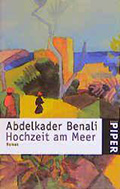
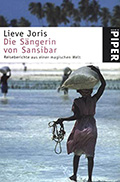
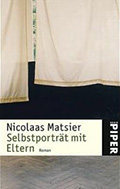
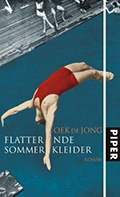
Piper eventually had more success with the works of the authors Oek de Jong, Hendrik Groen, Yvonne Kroonenberg, Peter Van Straaten, Koos van Zomeren and Lieve Joris. However, the number of editions of publications by other authors remains limited. Piper only published one title from the oeuvres of Abdelkader Benali, Nicolaas Matsier, Ayaan Hirsi Ali, Joost Zwagerman and Paul Verhoeven.
As well as
Although children's and youth literature from the Netherlands and Flanders plays an important role in Switzerland, literature for adults is equally important. Publishing house Diana publishes both. Besides translations of the works of Tessa de Loo, Diana also published three titles by the Flemish writer Kristien Hemmerechts, who after some time, has finally found a home base with Diana.
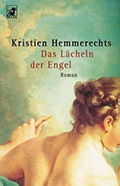
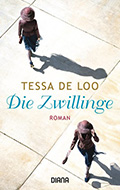
Unlike Austria, Switzerland is an important player in the field of Dutch literature in German translation. Switzerland's strong publishers represent important authors, and, what is perhaps even more important, where possible Swiss publishers opt to translate oeuvres not individual works—this at least applies to publishers such as Arche, Diogenes and Piper—what evidently increases the symbolic capital for Swiss publishers.
(Herbert Van Uffelen)
References
Kohlbrei, Kirsten: Der Brief für den König. In: JUGENDBUCH couch.de, (2021) (https://www.jugendbuch-couch.de/titel/2942-der-brief-fuer-den-koenig/)
